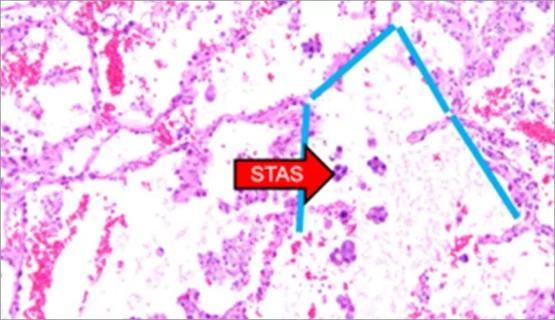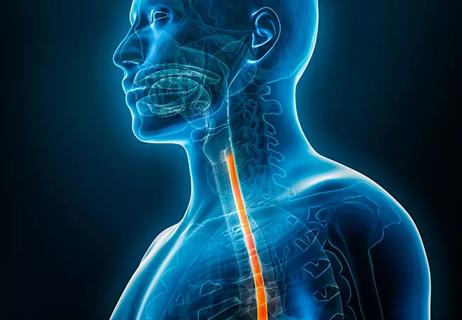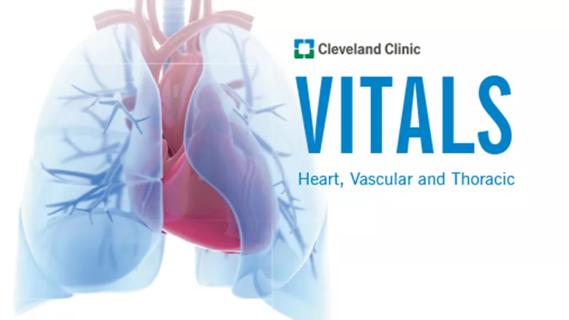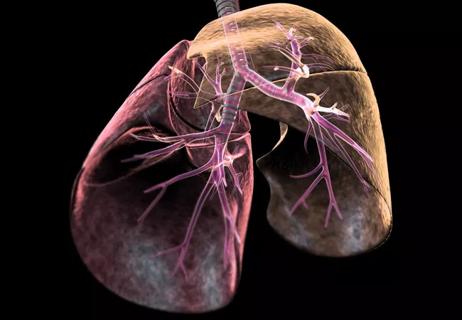Modifiable risk factors include malnourishment and donor-recipient mismatch

Pleural complications following lung transplantation are associated with worsening allograft function and death but not with acute rejection. So found a retrospective analysis of more than 1,000 adults who underwent primary lung transplantation at Cleveland Clinic, nearly half of whom developed pleural complications.
Cleveland Clinic is a non-profit academic medical center. Advertising on our site helps support our mission. We do not endorse non-Cleveland Clinic products or services. Policy
The study, the first to identify the effects of pleural complications on allograft function and survival, was published in Annals of Thoracic Surgery (2021;111:407-415). It also evaluated risk factors for these complications in the short and long term, identifying two modifiable risk factors: malnourishment and recipient-to-donor mismatch.
“Pleural complications after lung transplantation are very common, and once a patient develops one, subsequent events are likely, with lower survival after each episode,” says the study’s senior and corresponding author, Usman Ahmad, MD, a thoracic surgeon at Cleveland Clinic. “Optimizing preoperative nutritional status and matching weight and race between recipient and donor are important strategies that may improve outcomes.”
While lung transplantation has seen many advances over recent decades, five-year survival rates remain relatively low, at just 56%. Although survival is closely linked to allograft function, pleural complications — which can lead to earlier-than-expected decline in graft function — have not previously been well studied. “Our study aimed to examine the role of pleural effusions and other pleural complications on allograft function and survival, as well as the risk factors for developing these complications,” Dr. Ahmad notes.
Between 2006 and 2017, 1,039 adults (mean age, 57 ± 12 years; 32% female) underwent primary lung transplantation at Cleveland Clinic. Of those, 468 patients (45%) had pleural complications, as follows:
Risk factors for pleural complications within the first three months after transplant included the following:
Risk factors for pleural complications beyond three months included older age, hypertension, smoking history, lower lung allocation score and donor death from anoxia.
Pleural complications were associated with worse overall survival, as five-year survival ranged from 59% among patients with no pleural complications to less than 51% in those with one complication to 38% in those with two or more complications.
In contrast, no association was found between pleural complications and acute rejection. “While traditionally a new pleural effusion is considered a surrogate of rejection, these detailed analyses failed to show any such association between pleural complications and acute rejection,” Dr. Ahmad observes.
To assess for effects on allograft function, the researchers focused on what they describe as “a relatively homogeneous group of 71 patients with pleural effusions who required only thoracentesis.” Occurrence of pleural effusion was associated with a marked reduction of forced expiratory volume in 1 second (FEV1) in these patients compared with patients without pleural complications; while thoracentesis improved lung function in these patients, their FEV1 failed to return to levels of those without complications. Moreover, subsequent pleural effusions reduced FEV1 below levels from the first episode.
Dr. Ahmad notes several important study takeaways about the role of pleural effusions in lung transplantation.
1) Preventing pleural effusionis critical. Pleural effusion was the most common pleural complication, and it was independently associated with worse survival. Two modifiable risk factors for its development were identified: patient nutritional status and donor-recipient mismatch. “These two risk factors are well known, and the importance of addressing them needs to be reiterated,” Dr. Ahmad emphasizes.
2) Treating pleural effusions helps. The risk of developing plural effusions was greatest from one to nine months after transplantation. At Cleveland Clinic, effusions are typically managed as follows:
“Interestingly, our study found that pulmonary function never fully reached baseline levels after thoracentesis,” notes Dr. Ahmad. “However, it did confer a durable benefit, as FEV1 improved.”
3) Pleural effusions are not associated with rejection. Although it’s commonly thought that acute rejection leads to pleural inflammation, causing effusion, no such relationship was found in the current study. This supports other studies that have concluded that pleural effusion on chest CT has poor sensitivity, specificity, and positive and negative predictive values for acute lung rejection. “CT evidence of pleural effusion should not automatically lead to treatment of putative rejection,” Dr. Ahmad advises.
4) Underlying clinical conditions likely lead to effusions. Whether pleural effusion is the cause of worse outcomes or simply a manifestation of other underlying clinical problems — such as parapneumonic effusion, malignancy, heart failure or malnutrition — could not be determined by this study. “Underlying clinical problems are likely the primary contributors to poor survival,” Dr. Ahmad adds. “This makes it especially important to address the factors that one can modify preoperatively — namely, optimizing the patient’s nutritional status and obtaining the best organ size match available.”

Young age, solid tumor, high uptake on PET and KRAS mutation signal risk, suggest need for lobectomy

Going beyond the Eckardt symptom score to evaluate dyspepsia, eating and symptom “bother”

Catch up with our latest volumes and outcomes data

Long-term lung allograft outcomes clinically unaffected by organ exposure, study finds

Imaging dye enables vascular assessment to promote procedural precision and safety

Management is guided by patient and tumor characteristics, institutional expertise

A call to use lung weight in assessing need for EVLP, transplant suitability

Retrospective review documents improved outcomes and sicker patients over time